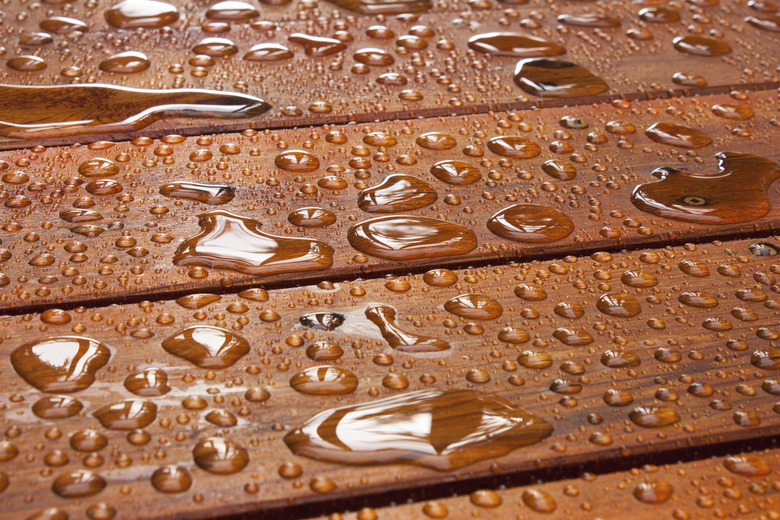How Does Rain Affect Wood?
Most species of wood don't do well when exposed to rain; exceptions include cedar, redwood, teak and ipe, which contain natural oils the safeguard them against moisture. Other species need the protection of a finish to protect them from rain and humidity, or else they quickly warp, crack and rot.
Cellular Water Absorption
Cellular Water Absorption
When wood is part of a tree, its cells are full of water. When the tree is cut and the wood milled, the cells slowly dry out and shrink. Exposed to rain, the cells reabsorb water and swell, and they shrink again when the sun comes out. This natural movement can cause gaps or curling when boards are installed next to each other. It can also cause cracking and warping, depending on how evenly the cells shrink and swell.
Rot
Rot
Rain causes rot in wood that lacks the natural oils to resist it by creating the moisture necessary for microorganisms to flourish. Exterior wood in shady locations is most vulnerable, as are joints between boards in which water collects. Even weather-resistant species become vulnerable in extremely wet, shady conditions. The best way to avoid rot on exterior wood is to paint or finish it regularly after cleaning it with a solution of detergent or trisodium phosphate, chlorine bleach and water.
